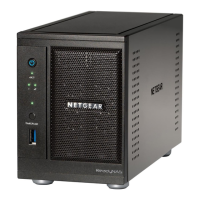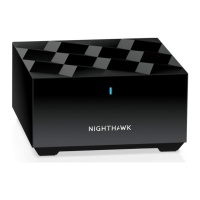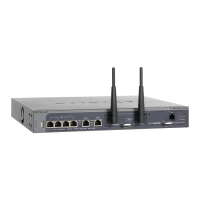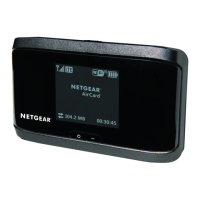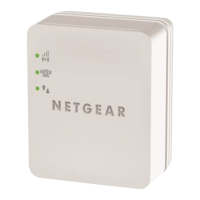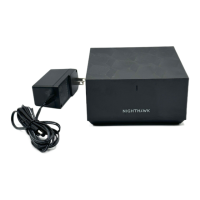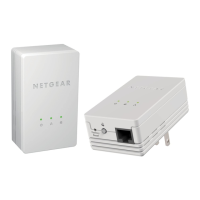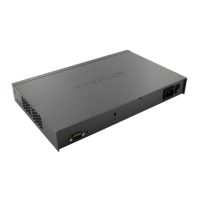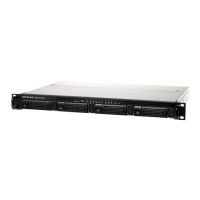
Do you have a question about the NETGEAR RNRX4410 - ReadyNAS 2100 NAS Server and is the answer not in the manual?
| Brand | NETGEAR |
|---|---|
| Model | RNRX4410 - ReadyNAS 2100 NAS Server |
| Category | Network Hardware |
| Language | English |
Explains typographical conventions and message highlighting formats used in the manual.
Lists the revision history of the user manual, including part number, version, publication date, and description.
Provides an overview of the ReadyNAS 2100's features, capabilities, and target market.
Explains the advantages of ReadyNAS's proprietary RAID technologies for data protection and volume management.
Details the components and indicators on the front panel, including drive bay and control panel.
Describes the function and status indications of each item on the ReadyNAS control panel.
Details the ports and components located on the rear panel of the ReadyNAS 2100.
Guides users through the initial setup process for the ReadyNAS, including RAID configuration.
Introduces the RAIDar utility for discovering and managing ReadyNAS units on the network.
Explains the operation and modes of the FrontView management console for system configuration.
Provides information about the NETGEAR ReadyNAS Community website for support and user interaction.
Explains how to configure network settings such as interfaces, gateway, DNS, and DHCP for the ReadyNAS.
Details configuring standard settings, teaming/failover, VLAN, and performance for Ethernet interfaces.
Covers setting hostname, default gateway, and DNS server configurations for network integration.
Explains how to configure WINS for network browsing and DHCP for automatic IP assignment.
Describes how to set and recover the administrator password for enhanced security.
Guides on enabling and configuring file sharing protocols like CIFS, NFS, AFP, FTP, and HTTP.
Details how to set up media streaming services like SqueezeCenter, iTunes, and UPnP AV.
Provides an overview of RAID levels (Flex-RAID, X-RAID2) and volume configuration options.
Explains how to manage volumes using Flex-RAID, including deleting and adding volumes.
Details how to expand data volumes and add disks for redundancy with X-RAID2 technology.
Explains how to create and configure iSCSI target volumes for storage area network access.
Describes how to manage and configure USB storage devices connected to the ReadyNAS.
Covers configuring the ReadyNAS to act as a print server for USB printers.
Explains how to adjust system settings including clock, alerts, language, and firmware updates.
Explains the User and Domain security modes for controlling access to shared data.
Details how to configure and manage user accounts and workgroups for local security.
Explains how to integrate the ReadyNAS with a Windows domain controller for centralized authentication.
Guides on creating and managing user and group accounts and setting disk quotas.
Covers creating, configuring, and managing shared folders and their access permissions.
Describes how to access shares using a web browser, including HTTP and HTTPS protocols.
Explains how to access shares via FTP and FTPS, including security considerations.
Details how to access shares using the Rsync protocol for file transfers.
Explains how to stream media content to networked devices.
Covers enabling and configuring remote access to the ReadyNAS via FTP and HTTP.
Guides on setting up and managing automated backup tasks for data protection.
Details the process of creating new backup jobs, selecting sources, and destinations.
Explains how to schedule backups and configure options like full backups, logs, and file removal.
Describes how to view and manage scheduled backup jobs.
Explains how to configure the physical backup button to trigger backup jobs.
Details how to view the logs of backup operations to monitor status and errors.
Describes how to modify existing backup job configurations.
Explains how to use the ReadyNAS as a backup destination for Apple's Time Machine.
Introduces snapshots for point-in-time data recovery and versioning.
Guides on how to manually take or schedule snapshots for data protection.
Explains how to adjust the space reserved for snapshots to manage storage.
Details backing up data to a USB drive or a secure online vault service.
Explains various system settings to optimize ReadyNAS performance, including journaling and caching.
Describes how to connect and configure an Uninterruptible Power Supply (UPS) for system stability.
Covers disk spin-down, power timer, UPS event, and wake-on-LAN features for power saving.
Details how to configure disks to spin down after a period of inactivity to save power.
Explains how to schedule automatic power on and off cycles for the ReadyNAS.
Describes how to configure UPS monitoring and integration with other NAS devices.
Explains how to remotely power on the ReadyNAS using a Wake-On-LAN magic packet.
Describes how to monitor the overall health and status of the ReadyNAS system.
Explains how to view disk, fan, temperature, and UPS status, including SMART data.
Details how to access and analyze system logs for troubleshooting and monitoring.
Provides information on control panel LEDs and their meanings for system diagnostics.
Guides users on how to identify, select, and replace a failed hard disk in the ReadyNAS.
Explains the process of resynchronizing the RAID volume after replacing a disk.
Details the various functions available through the system diagnostic menu, including OS reinstall.
Guides on how to reinstall the ReadyNAS firmware using the OS Reinstall option.
Explains how to reconfigure RAID settings, including resetting to factory defaults and creating new volumes.
Describes the options for shutting down or rebooting the ReadyNAS system.
Provides instructions for accessing ReadyNAS shares from Mac OS X using AFP.
Details accessing AFP shares advertised via Bonjour on Mac OS X.
Explains how to access AFP shares advertised via AppleTalk.
Provides instructions for accessing ReadyNAS shares from Mac OS 9.
Guides on how to mount and access ReadyNAS shares from Linux/Unix clients using NFS.
